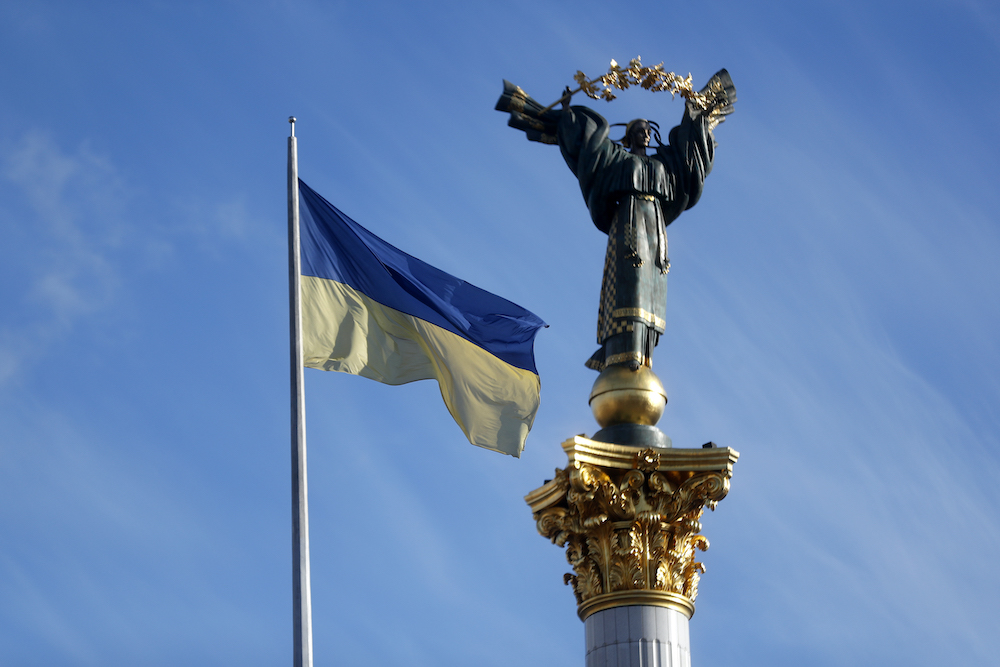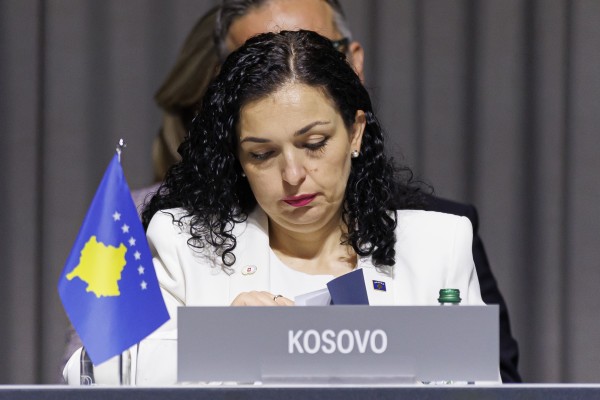With the Russian invasion bogged down in eastern Ukraine, Ukrainian media outlets continue to adjust to the new reality of the war. From frontline coverage to new methods of raising revenues, the war has presented independent media with unprecedented challenges.
As Russia consolidates gains in Ukraine’s east, Russian disinformation and propaganda campaigns seek to replace and undermine independent media in occupied regions. Nevertheless, across the country, despite facing immense psychological pressure, a lack of human resources, and shortened planning timeframes, Ukrainian media continue their valuable work.
IPI talked to three media outlets in Ukraine to find out how they’ve adjusted to meet the needs of the conflict, what challenges they face, and what their future plans are.
Slidstvo: investigating war crimes
Before the war, Slidstvo, a small investigative outlet, focused on stories of corruption and crime committed by Ukrainian public officials, priding itself on its in-depth reporting.
However, driven by the new needs of the war, its focus soon changed.
“We changed priorities, and began covering war crimes”, said Anna Babinets, Slidstvo’s editor-in-chief and co-founder, in an interview with IPI. “A few times per week we publish stories about war crimes. We have created a list of Russian military members who we have proof of being in Ukraine, including those accused of war crimes.”
The war forced Slidstvo to adapt its reporting rhythm, switching to producing daily content. Nevertheless, the outlet has been able to publish extremely detailed reports on the war, using its connections with international journalists, civil society organizations, and ordinary Ukrainians to achieve its goals.
Public perception of the war has started to shift as it drags on, creating new difficulties. “It’s the fourth month of the war, people around the world and even in Ukraine already take it (the war) for granted”, said Babinets. “We are always experimenting, we are looking for better ways to get information out but it is harder and harder to bring something to the audience to show what the war means.”
Despite crowdfunding and financial support from a wide range of sources, long-term financial stability remains a challenge. “It is very hard to figure out how things will change in a few months”, said Babinets. “Donors do not give money for longer than three to four months. On the one hand, I understand them since they do not know what the situation will be, but on the other hand, so many things are uncertain due to the war. I don’t know if my people will have salaries in a few months. We want to have a sustainable mechanism. I want to be confident that I will not tell my workers in such hard times that they won’t have work from Monday onwards.”
The war is a unique challenge for investigative outlets. Many of the governmental records previously available to the public are now closed, Babinets said. Nevertheless, Babinets and her team continue to look for new opportunities to expose potential corruption, seeking to review the rebuilding efforts that may soon be underway in previously occupied areas of Ukraine.
Ukrainska Pravda: the disrupted media market
Ukrainska Pravda (UP), one of the largest online dailies in Ukraine, is renowned for its independent reporting. With the growing probability of conflict in early February 2022, the outlet, like many others, began preparing, purchasing safety equipment, new facilities, and other supplies.
“Our news output actually increased in the first days of the war”, said UP media manager Andrei Boborykin in an interview with IPI. On February 24, the outlet saw a record number of users visit its website, releasing an English-language version of its site on the same day. Despite this achievement, its revenues soon dropped massively, amidst a collapse of the Ukrainian advertising market.
“The biggest challenge has been the complete destruction of the media economic model”, said Boborykin. “95 percent of our revenue came from selling advertising. After the invasion, that revenue dropped by 90 percent. In February and March, we got a tiny fraction of the money that we planned on earning during that time. One of my biggest goals in the last four months was to reestablish, at least partially, our revenue streams and of course to find new ones.”
For larger publishers like UP, pursuing grants was a completely new undertaking. It was fortunate enough to receive substantial financial assistance due to its size and influence in Ukraine. Simultaneously, Boborykin used his position to help smaller outlets, consulting for local publishers and working with the Media Development Foundation’s projects in Ukraine.
“Donor programs and donor financing are going at their own pace and that pace is not very fast”, suggested Boborykin. “I would say that the donor organizations themselves have to adapt to the new reality. For the last months, support has been piecemeal. Creating a budget for every month has been hard for everyone.”
Ensuring journalists’ safety also became a major priority. “There are safety risks that still remain even if not to such an extent as they were in the first months”, said Boborykin. “Our journalists cover work near the frontline and in areas liberated from Russian forces. We work with organizations that provide safety gear. We are a major news-gathering website, one of the biggest in the country. For us, it is critical to sustain output throughout this period.”
With businesses slowly reopening, advertisement revenues are increasing from both domestic and international sources, as Ukrainians in other countries monitor domestic developments, said Boborykin. UP’s English-language coverage has also created partnerships with news aggregators such as Yahoo! News and SmartNews. Ultimately, growth, development, and new projects remain a priority.
Kyiv Independent: growth and outreach
IPI member Kyiv Independent, which started its work only three months prior to the full-scale Russian invasion in February, soon became the leading English-language outlet in Ukraine, amassing a global audience. Its origins – much of its staff quit the Kyiv Post to protest against suspected editorial interference – underpin the principles that it continues to operate by to this day: integrity, independence, and a relentless pursuit of the truth.
“I have to say that our situation is unique as our audience is located mostly outside of the country and was less affected by the war”, said Kyiv Independent CEO Daryna Shevchenko and Chief Editor Olga Rudenko in a conversation with IPI. “Our membership skyrocketed in the first months of the full-scale invasion. We developed new partnerships with different companies around the world and are very grateful for the support we have received.”
Crowdfunding became a significant source of revenue for the Kyiv Independent. GoFundMe and Patreon continue to be used to raise revenues and increase membership.
The outlet’s future plans emphasize consolidation and development. “We are working on our strategy for retaining our members and attracting new ones”, said Shevchenko and Rudenko. “We are returning to the process of creating a plan and having a strategy to widen our horizon. We will likely develop further commercial ties and are looking into ways of expanding our business model.”
The outlet faces its own hurdles. “We are severely understaffed”, said the two journalists. “We are trying to hire more people now, that is our biggest challenge.” At a time when shock is giving way to slow acceptance of the prospect of prolonged conflict, the outlet has started to look toward long-term stability.
The Kyiv Independent has also sought to help other local media organizations, publicly promoting a fundraising campaign for independent Ukrainian media organizations. The new publication continues to look to the future to reinforce its unique role in the larger network of independent outlets.
The value of a free press
Ultimately, the stories of these three media organizations – Slidstvo, Ukrainska Pravda, and the Kyiv Independent – reveal much more than the problems facing different outlets in Ukraine. They also show the value of a free and independent press, even and especially during times of war, with each publication fulfilling a unique role in bringing news and information to the public in Ukraine and the rest of the world.
This statement by IPI is part of the Media Freedom Rapid Response (MFRR), a Europe-wide mechanism which tracks, monitors and responds to violations of press and media freedom in EU Member States, Candidate Countries, and Ukraine. The project is co-funded by the European Commission.




